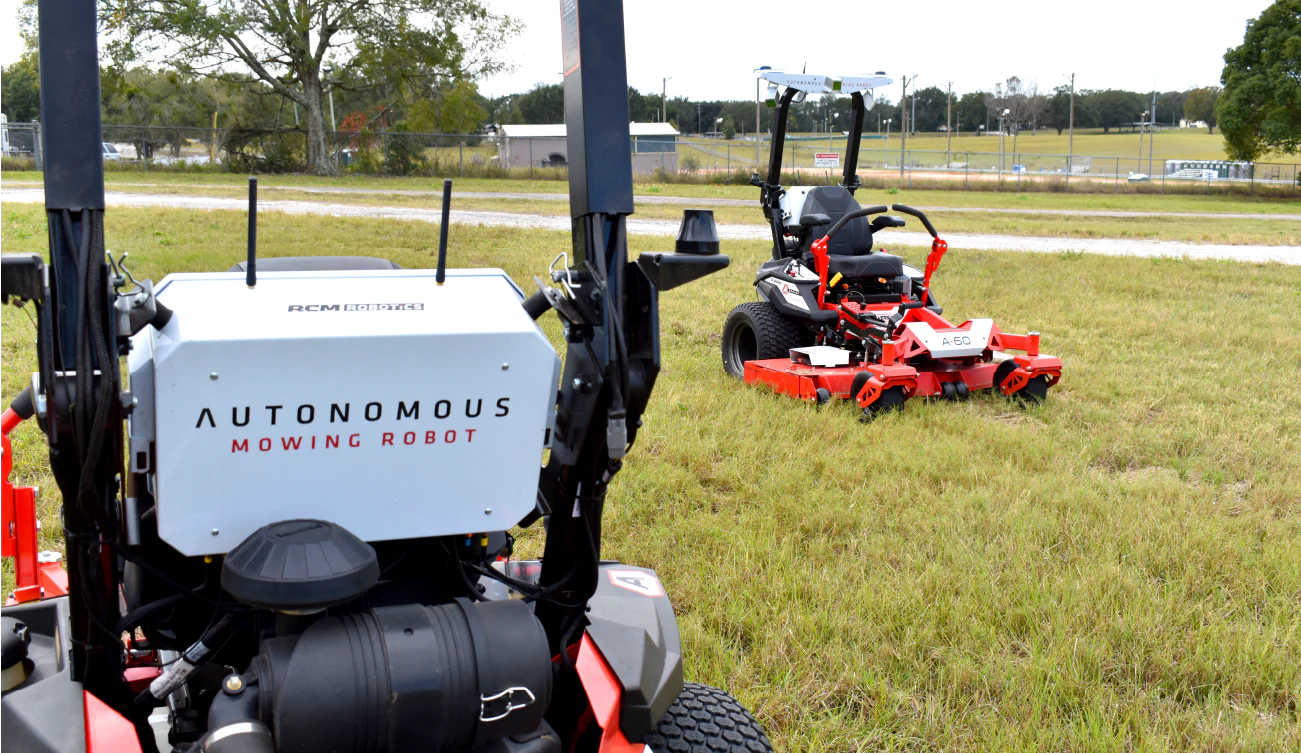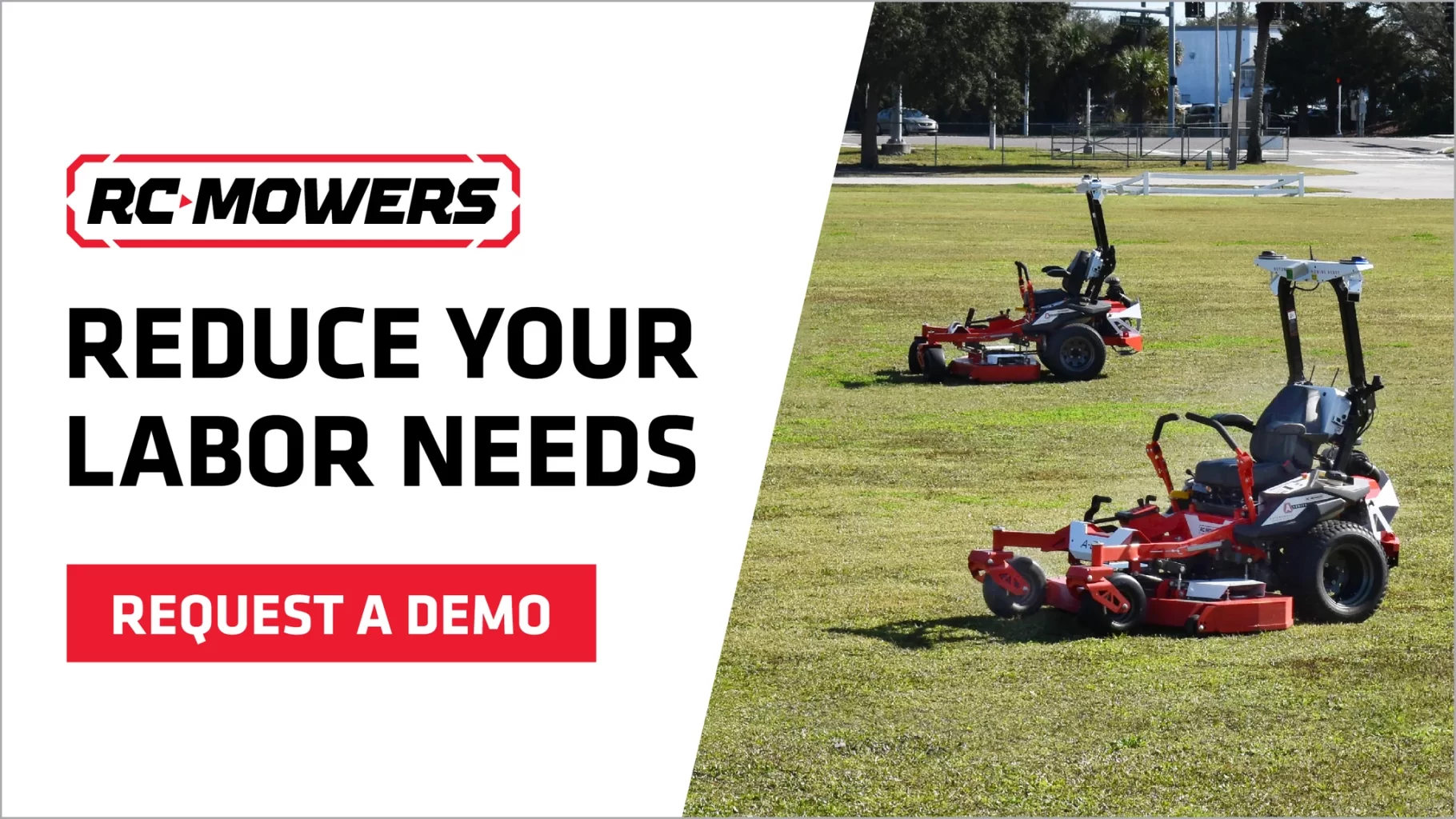Implementing Commercial Mowing Autonomy

Table of Contents
Table of Contents
Taking autonomous mowing from inspiration to operation
This is a familiar scenario: A commercial turf operation identifies autonomous mowers as valuable to their operation, and they ask this question: “How do we get started integrating autonomous mowing into our business?”
Typically, the interest in autonomous or driverless mowing is inspired by a profound and ongoing labor shortage. There’s a lack of workers to complete the existing workload, and difficulties with current staff members that are unreliable and less than motivated. In addition, the lingering uncertainty of H2B labor and the annoyance of constant labor turnover are realities in this industry.
Operations have had a glimpse of the future and want to be an industry leader in this technology and stand out as an early adopter. They also hope to get ahead of competition that may or may not be evaluating autonomous mowers. Landscape businesses inquiring about autonomy are looking to grow revenue beyond the current capacity, break the revenue plateau, and be able to take on more work with less people—scaling the business.
Ultimately, they want to be a landscape operation that is less reliant on erratic human labor and more reliant on consistent machine labor. The goal is not to replace people, but to augment the strong workforce they have with technology that benefits both individual workers and the entire business.
There are two main types of autonomous lawn mowers in the marketplace today. Installed autonomous mowers are put in place and that’s where they live, mowing the same ground over and over. In the case of older installs, the machines are contained and controlled via ground wires. This would be equivalent to a grass-cutting “Roomba®.” The newer versions of installed autonomy are controlled by GPS or RTK, mowing in a stripe pattern. An installed mower is often scheduled to mow every day or every other day, and it returns to its charging station when complete.
Integrated autonomous mowers are, as advertised, integrated within a commercial landscape mowing operation alongside other gas and electric mowers. In this system a trained, dedicated operator mows the defined boundaries in nearly any configuration that allows 10 to 15-foot safety zones around obstacles. In general, these autonomous mowers can knock out 1 to 3 acres per hour depending on conditions. Our integrated autonomous mowers (Autonomous Mowing Robots™) appear very much like any standard zero-turn mower in your fleet.
It's important to understand the current state of commercial autonomous mowing. Generally, the products on the market today are capable of striped, unobstructed, open-area mowing. Most autonomous products have the ability to navigate in and around obstructions, leaving a safety buffer around these obstacles which is then mowed manually (either before, during, or after autonomy). In most cases, the operator teaches the mower its boundaries and then the plan is set—teach once, cut again and again.
While autonomous mowing is underway, the operator remains within sight of the mowers as they complete detailed handwork. The operator always carries a remote emergency device to immediately stop all mowers.
After learning about today’s market, take time to evaluate current supplier offerings. Instead of focusing on the product itself, consider first evaluating the systems, or support mechanisms, provided by autonomous mowing suppliers. Real and responsive support is critical with emerging technology. Then consider a demonstration to evaluate the autonomous mowers’ safety, ease-of-use, reliability, and productivity. By first focusing on the autonomous infrastructure around the product, you are setting your operation up for success.
As you zero-in on certain suppliers, make sure that there’s a strong case for their product as it pertains specifically to your portfolio of work, or projected work. A confident full-support partner will team with you to make that determination. Look for services, materials, and one-on-one support that truly helps you successfully integrate autonomous mowers into your operation. Speaking of operation, how will the autonomous mowers be supported from an operational perspective? A dedicated supplier will partner with you from, “Maybe autonomy...” to “We are autonomous!”—all aspects covered, all questions answered, all in with you.
While leaders in an organization must be committed to the vision of autonomy, most critical are the middle managers and operators that will own the autonomous mowing operation. The middle manager that oversees the operation may not be out in the field with the machines daily, but they should have familiarity with the autonomous mowers, the route, the operators, the properties, and the customers. Operator selection is equally crucial. We have seen in our experience, that the best operators share the following traits: they are trustworthy, willing to be flexible and adapt new workflows, open to new tech and want the autonomous mowers to succeed. Resistance to change at the operator level will almost certainly ensure operation failure.
All autonomous mowing operations are different. The general benchmark are properties like schools, athletic fields, parks, military bases, and large commercial or industrial sites. At this stage of the technology, large commercial autonomous mowers can efficiently work large, generally open mowing sites. They can certainly be applied in more obstructed areas, but the production expectations should decrease as the mowers navigate in and around obstacles. Generally the best sites allow the operator to place multiple mowers into autonomy while they are doing other work like string-trimming or blowing. In terms of volume, one large autonomous mower should be fully capable of 20 to 30 acres of autonomous mowing per week (in general). The mowers are certainly capable of performing far beyond that, but that is a standard measurement to apply to your autonomous potential.
Get specific with product questions:
- What is the cost? Are there ongoing costs?
- What will be my ROI?
- How will my robots be supported, from a mechanical perspective?
- Who do I turn to if there is a problem?
- Is there a separate company for the software than the mower?
- How long do you expect the autonomous mower to last?
- What is the warranty?
The RC Mowers competitive advantage is real. We will address all of your questions and concerns honestly and accurately. We are innovators in the technology and absolute champions of our customers’ pathway to success. The RC Mowers Success System™ is an integrated system built on a customer-first commitment, a proactive mindset, and a relentless dedication to your business success.
Our proprietary Success System takes the form of pre-delivery planning and implementation guidance; on-site training and certification; ongoing data analysis and sharing; ready-made tools for communicating with your staff, customers and community; work-site and vehicle signage and recommendations, second-to-none service every step of the way, and so much more.
Having an OEM partner that is just as invested in the success of your autonomous operation as you are is your competitive advantage. As with all emerging technology, early adopters should expect hiccups and bumps along the way. This makes a strong manufacturer partnership even more critical and valuable.
Get in touch with us to learn more about how our autonomous mowers, our exceptional people, and our Success System can work for you.

